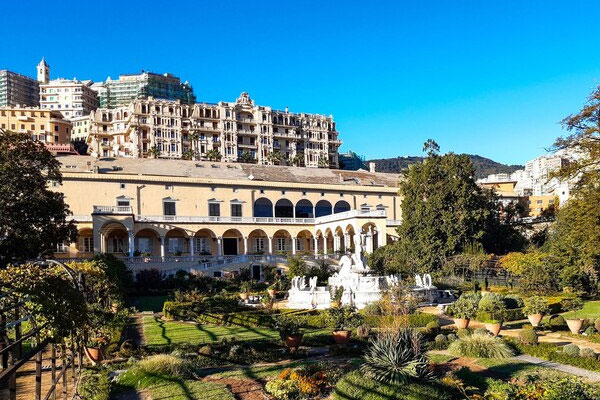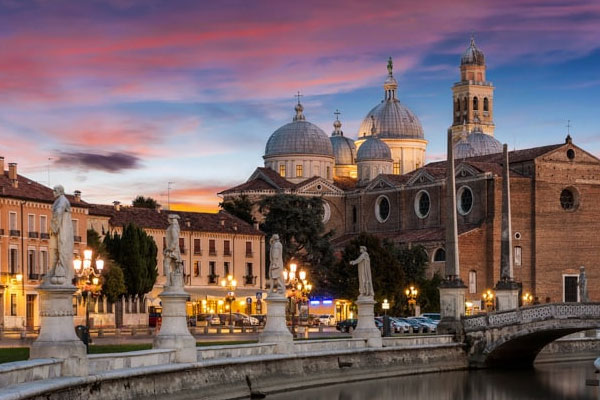Travel
Les Invalides Paris France

Les Invalides Paris France
Exploring Les Invalides: A Historical Gem in the Heart of Paris, France
Les Invalides in Paris stands as a testament to France’s rich cultural heritage, a grand architectural complex with profound artistic and spiritual significance for the French people. This remarkable site intertwines the moral experiences, emotional impulses, and trials faced by those who defended their nation with honor and dignity.
The Origins of Les Invalides:
In 1670, King Louis XIV made a compassionate decision to construct a shelter for war veterans. The initial purpose was simple – to provide a home for sick and wounded soldiers returning from battle who were often forced to beg on the streets.
Little did anyone anticipate that this institution, initially an almshouse, would evolve into the grand architectural complex known as Les Invalides and eventually become the final resting place of Napoleon Bonaparte I.
Historical Genesis
War, victories, and battles, though celebrated for valor, often left a growing number of disabled veterans facing hardships. In response, the suburb of Grenelle was chosen as the construction site for the shelter due to its convenient location on the banks of the Seine, facilitating material transportation.
Architect Bruant spearheaded the project, envisioning a complex with five courtyards, corridors spanning 16 km, and the capacity to accommodate up to 6 thousand pensioners. By 1674, the first inhabitants settled in Les Invalides, marking the beginning of its significant historical journey.
Cathedral of the Invalides:
Towards the end of the 17th century, King Louis XIV commissioned the construction of the Church of Saint-Louis within Les Invalides. The construction spanned 30 years, culminating in a cathedral that would host magnificent ceremonies, including the 1804 presentation of orders and medals of the Legion of Honor to Napoleon I himself.
The cathedral’s architecture serves a dual purpose, with the nave designated as a soldier’s church, perpetually adorned with flags from conquered lands. Behind a glass partition added in 1873, a domed church with intricate domes adds to the architectural splendor. Today, the Cathedral of the Invalides is a highly visited attraction in Paris, seamlessly blending classical proportions with opulent interior decor.
Napoleon’s Tomb:
Napoleon Bonaparte, hailed as a military genius and transformative ruler, found his final resting place at Les Invalides in 1840. His tomb takes the form of a monumental sarcophagus adorned with a laurel wreath, surrounded by inscriptions detailing his greatest victories. Sculptures of goddesses holding a scepter and crown symbolize power, guarding the eternal peace of Bonaparte.
Museums Within Les Invalides
Les Invalides is home to four museums of immense historical significance, each offering a unique perspective on France’s rich past.
Museum of Plans and Reliefs:
Officially opened in 1943, this museum traces its origins back to the 17th century when minister François-Michel de Leterrier began collecting three-dimensional models. The exhibition, initially focused on terrain and defensive structures, moved to Les Invalides in the 18th century.
Museum of Contemporary History:
Established in 1987, this museum stands as a unique repository of historical facts that shaped France throughout the 20th century. With over 500 thousand exhibits, including posters, paintings, photos, videos, and chronicles, it provides a comprehensive insight into the country’s past.
Museum of the Order of Liberation:
Dedicated to the Knights of the Order of Liberation, this museum showcases approximately 4 thousand exhibits, including weapons, military uniforms, flags, and banners captured during numerous battles. The Order of Liberation, founded by Charles de Gaulle in 1940, recognized the contributions of those in the Resistance during World War II.
Army Museum:
Among the first museums founded at the initiative of Louis XIV, the Army Museum initially occupied two small rooms dedicated to the history of artillery troops. Today, it features extensive collections from the Middle and Far East, royal armor, battle scenes, and even a collection of Napoleon’s iconic cocked hats.
Practical Information for Visitors
Ticket Price:
Tickets, priced at 9.5 €, can be conveniently purchased online, at city vending machines, or museum ticket offices. Admission is free for individuals under 18. Photography and video filming are allowed, subject to a 6 € fee for a receipt.
Opening Hours:
Les Invalides follows seasonal opening hours. From the first days of April to October, the museum is open from 10:00 to 18:00. From November to March, the hours are reduced to 10:00 to 17:00. On Tuesdays during the spring-summer period, the museum extends its opening hours until 21:00.
The chapel with Napoleon’s sarcophagus remains open until 19:00. The museum is closed on the first Monday of the month.
How to Get to Les Invalides Paris France:
Located at 129 Rue de Grenelle in the 7th arrondissement of Paris, Les Invalides is easily accessible by metro (Line 8 to Latour-Maubourg or Invalides stop, Line 13 to Varenne and Saint Francois-Xavier station), RER train (Invalides stop), and various city buses (routes 28, 63, 69, 80, 90).
Conclusion
In conclusion, Les Invalides stands not only as a historical treasure trove but also as a living monument to the resilience and sacrifice of those who defended France. Its diverse museums, awe-inspiring architecture, and the final resting place of Napoleon Bonaparte make it a must-visit destination for anyone seeking to delve into the heart of French history.
Travel
What to do in Genoa – Travel To Genoa

What to do in Genoa – Travel To Genoa
What to do in Genoa :
Genoa, often overshadowed by its more popular Italian counterparts, holds a wealth of treasures waiting to be discovered. While it may not immediately come to mind when planning an Italian adventure, this maritime city boasts a rich history as the former capital of a powerful republic and the birthplace of renowned figures like Christopher Columbus and Niccolo Paganini.
Despite its lesser-known status, it offers a unique charm and a plethora of attractions that appeal to curious travelers. So, what makes this city special, and what should you do when you visit?
Getting to Genoa
Reaching Genoa is easier than you might think. During the summer months, S7 Airlines offers direct flights, while various European carriers operate year-round flights. Alternatively, you can fly to Milan and take a short train ride to Genoa, which is only about an hour and a half away. Train travel is also an option, with direct routes available from cities like Moscow. Whether you choose to fly or take the train, Genoa is well-connected and easily accessible.
Where to Stay in Genoa
Choosing accommodation in Genoa requires some consideration, especially due to the city’s intricate layout. The historical center may seem compact, but its labyrinthine streets can be confusing to navigate, particularly with luggage. Opting for hotels near major transportation hubs like Principe and Bignoli train stations or metro stations is advisable.
For first-time visitors staying briefly, accommodations near Genova Piazza Principe offer convenience and easy access to transportation links, including the airport bus stop and cruise terminal. From luxurious hotels like the Grand Hotel Savoia to budget-friendly options such as Hotel Chopin, there’s something to suit every preference and budget.
Getting Around Genoa
Exploring Italy on foot is the best way to immerse yourself in its unique atmosphere. While the city’s narrow medieval streets may pose navigational challenges, they offer an authentic glimpse into its history and character. However, public transportation is essential for covering longer distances or navigating the city’s verticality.
Genoa boasts a metro system, buses, funiculars, and elevators integrated into the transportation network. Consider purchasing a 24-hour Genova Pass for unlimited access to public transport, excluding airport shuttles.
What to See in Genoa
Contrary to popular belief, Genoa is brimming with attractions awaiting discovery. From opulent palaces and picturesque gardens to ancient churches and world-class museums, the city offers something for every traveler. Key highlights include Ferrari Square, a grandiose civic space; the Cathedral of St. Lawrence, guarded by stone lions; and the Palazzi dei Rolli, a collection of historic palaces showcasing Genoa’s architectural splendor.
Additionally, numerous churches, including the Church of St. Peter’s and the Church of St. John, offer cultural and architectural delights. Don’t miss iconic landmarks like Villa del Principe, Lanterna lighthouse, and the medieval gate of Porta Soprano, each adding to Genoa’s allure.
Day Trips from Genoa
While Genoa itself warrants exploration, it also serves as an ideal base for day trips to nearby destinations. Along the Ligurian coast, picturesque towns like the Cinque Terre National Park, Portofino, Rapallo, and Camogli beckon with their scenic beauty and charm. Venture westward to discover hidden gems such as Noli, Finale Ligure, and Albenga, each offering its own unique allure.
Beyond the coast, explore the caves of Toirano or visit the historic town of Campo Ligure, known for its medieval castle. With so much to see and do in the surrounding area, Genoa provides an excellent starting point for exploring Liguria’s diverse attractions.
Conclusion
Genoa may not be as widely recognized as other Italian cities, but its cultural heritage, architectural marvels, and coastal beauty make it a destination worth exploring. Whether you’re strolling through its labyrinthine streets, admiring historic palaces, or embarking on day trips along the Ligurian coast, Genoa captivates visitors with its rich history and vibrant atmosphere. So, why not uncover the hidden treasures of this underrated gem on your next Italian adventure?
Travel
Things to do in Rimini Italy

Things to do in Rimini Italy
Do you know the most important Things to do in Rimini Italy? Let’s take a look
Rimini is renowned as a beach resort destination, drawing visitors from Italy and beyond with its long history of seaside hospitality. However, beyond its sandy shores lies a city steeped in ancient heritage and cultural charm, offering a wealth of attractions for travelers to discover. In this comprehensive guide, we’ll delve into everything you need to know to plan an unforgettable trip to Rimini.
Getting to Rimini
Rimini is accessible by air, land, and sea, making it convenient to reach from various parts of Italy and Europe. The city has its own international airport, Federico Fellini Airport, serving both domestic and international flights. Additionally, Rimini is well-connected by train, with direct rail links to major cities like Bologna and Ancona. For those arriving by car, highways provide easy access to Rimini from neighboring regions.
Where to Stay in Rimini
With its status as a popular resort destination, Rimini offers a wide range of accommodation options to suit every traveler’s needs and preferences. The Marina Centro area, situated in the heart of the resort district, is ideal for beachgoers seeking convenience and proximity to amenities.
Here, hotels like Erbavoglio and De Londres offer comfortable accommodations within walking distance of the beach. Alternatively, for those looking to explore the city’s historic center, hotels in the Old Town area provide easy access to landmarks like the Tempio Malatestiano and Ponte di Tiberio.
Getting Around Rimini
Navigating Rimini is relatively straightforward, with most attractions located within easy reach of the city center. Visitors staying in Marina Centro can explore the resort area on foot, while those venturing further afield can make use of public transportation options like buses and trains. Rimini’s efficient public transit system provides convenient access to key sites, including the Old Town and surrounding areas.
What to See in Rimini
Rimini boasts a rich cultural heritage, with a variety of historical and architectural landmarks waiting to be explored. In the city’s historic center, visitors can admire the impressive Tempio Malatestiano, a medieval temple converted into a cathedral, and stroll across the ancient Ponte di Tiberio, a Roman bridge dating back to the 1st century AD. For a glimpse into Italy’s cinematic history, Parco Federico Fellini offers a tribute to the renowned filmmaker with statues and exhibits celebrating his life and work.
In addition to its historical attractions, Rimini is home to modern marvels like Italia in Miniatura, a theme park featuring miniature replicas of famous Italian landmarks. Perfect for families and visitors of all ages, this unique attraction offers a fun and educational experience that showcases the country’s cultural heritage on a smaller scale.
Day Trips from Rimini
While Rimini itself offers plenty to see and do, its strategic location makes it an ideal base for exploring the surrounding region. Nearby destinations like San Marino, Santarcangelo di Romagna, and Gradara are easily accessible by car or public transportation, offering charming villages, historic sites, and picturesque landscapes to discover.
For those seeking a taste of urban culture, cities like Bologna, Ravenna, and Ancona are just a short train ride away, providing opportunities to explore their rich history, vibrant arts scene, and culinary delights.
Conclusion
From its sun-drenched beaches to its ancient landmarks and modern attractions, Rimini offers a diverse array of experiences for travelers to enjoy. Whether you’re soaking up the sun along the Adriatic coast, exploring the city’s historic center, or embarking on day trips to nearby destinations, Rimini promises a memorable and rewarding travel experience for visitors of all interests and ages.
Travel
Where to Stay in Trento Italy

Where to Stay in Trento Italy
Where to Stay in Trento, Italy :
Trento, nestled in a valley at the base of the Alps, is a city worth exploring! With its picturesque surroundings and proximity to other charming towns and attractions, Trento offers something for every traveler. Whether you plan to wander through the city streets, venture into the nearby mountains, or use Trento as a launching pad for further adventures, there’s plenty to see and do here.
Which area of Trento is best for accommodation?
Trento is relatively straightforward to navigate, with the historical city center separated from the train and bus stations by a large square. Near the station, you’ll find a tourist information kiosk where you can pick up a map of the city, or visit a nearby travel agency for assistance.
Trento offers city-wide wireless internet access, although you may need to register in advance for login credentials. It’s worth noting that temperatures can vary significantly between the city and the mountains, so be sure to pack appropriate clothing and footwear for your adventures.
The area around the train station is relatively clean and quiet, making it a convenient option for those planning to explore the region using public transportation. Hotels near the station, such as the Grand Hotel Trento and Hotel America, offer comfortable accommodations at slightly lower prices compared to those in the city center. These hotels provide easy access to both the station and the historical center of Trento, which is just a short walk away.
Speaking of the city center, Trento’s historical district is relatively compact, making it easy to explore on foot. When choosing a hotel in this area, focus on factors such as cost and traveler reviews rather than proximity to specific attractions, as most hotels are within walking distance of the main sights.
Keep in mind that older buildings in the city center may lack amenities like elevators and spacious bathrooms, but they often offer charm and character in abundance.
Hotels such as Hotel Venezia and Hotel Aquila D’Oro offer comfortable accommodations in the heart of Trento’s city center. While some rooms may offer views of the city or nearby landmarks, be prepared for the possibility of street noise, especially in the mornings. Alternatively, Albergo Accademia provides spacious designer rooms with amenities like jacuzzis, although guests may prefer rooms facing the quieter courtyard.
For those seeking a more independent accommodation option, apartments can be a great choice. Borgo Rossi Apartments, located near Piazza Venezia, offer kitchenettes and dining areas, allowing guests to prepare their meals and experience local cuisine firsthand. Be sure to communicate with the apartment owners or managers ahead of time to clarify details like heating and air conditioning availability, parking options, and key pickup procedures.
Conclusion
In conclusion, Trento offers a range of accommodation options to suit every traveler’s needs and preferences. Whether you choose to stay near the train station for convenience or in the heart of the city center for easy access to attractions, you’re sure to enjoy your time exploring this charming Italian city.
-

 Travel9 months ago
Travel9 months agoBest Spinning Rod for Bass 2024
-

 Technology9 months ago
Technology9 months agoBest Lure for Trout 2024
-

 Travel9 months ago
Travel9 months agoBest Hunting and Fishing Clothing 2024
-

 Travel9 months ago
Travel9 months agoBest Robot Vacuum Cleaners 2024
-

 Technology9 months ago
Technology9 months agoBest Floats for Night Fishing
-

 News6 months ago
News6 months agoValentine’s Deals
-

 Technology9 months ago
Technology9 months agoBest Twisters for Fishing 2024
-

 Travel9 months ago
Travel9 months agoBest Spinning Fishing Reels for Bass 2024



















